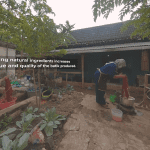Accelerating the SDGs: How Digital Finance Can Ignite Faster Progress Toward the Global Goals
As world leaders met at the U.N. General Assembly in New York last week, many discussions focused on how to ignite greater progress toward the Sustainable Development Goals (SDGs). Increasingly, digital financial inclusion is emerging as a key answer.
Today, two in three adults worldwide, more than ever before, have access to mobile money, formal accounts, electronic payments and fintech apps, making it easier to reach those who had previously been excluded from the formal economy. When deployed responsibly, digital financial services can be an important part of the solution for critical issues, including hunger, health, clean energy and climate change.
That’s why, around the world, many public, private and development sector players are shifting from cash to digital payments to achieve efficiency, transparency and financial inclusion – advancing many of the SDGs in the process. This includes governments from India to Kenya, global brands like H&M and Gap Inc., and international organizations like the U.N.
Here are a few of the growing number of governments and companies that are leading by example.
Building a better foundation
In Kenya, the spread of mobile money lifted roughly 1 million people out of extreme poverty in just six years – the equivalent of 2 percent of the population. This impact was mostly driven by changes in financial behavior. Access to mobile money increased financial resilience and savings, and improved labor market outcomes. As a result, many women moved out of agriculture and moved into business – allowing for a more efficient allocation of labor, effectively reducing poverty.
In Indonesia, Raskin, a subsidized food assistance program, had become the country’s largest social transfer for poor families. However, nearly half of the procured rice was lost and never made it to the targeted households. It was impossible to identify where in the delivery chain the rice went missing. Last year, the government shifted to card-based vouchers for the country’s 1.4 million recipients of subsidized rice. Since then, 9 out of 10 beneficiaries receive better quality, quantity and regularity of food.
In India, reported requests for bribes from officials decreased by 47 percent when the government switched from cash to smart cards for pension payments in Andhra Pradesh between 2010 and 2012. The likely reason was that the beneficiaries no longer had to interact with intermediaries to access their funds.
And at the height of the Ebola crisis in Sierra Leone a few years back, payment-related strikes put the effort against the disease at risk. Cash payments to response workers were slow, inaccurate and open to graft and theft. When officials made the move to pay workers digitally, payment processing times were cut from over one month to around one week, which eliminated worker strikes. Digital payments also saved more than US $10 million by eliminating double-payment, reducing fraud, and saving on cash logistics and security. Ultimately, this helped save countless lives.
Improving opportunity for all
A field experiment in Nepal showed that when low-income, women-headed households were given access to digital savings accounts, they were able to save and dedicate 20 percent more of their funds to their children’s education.
Digital financial inclusion of women doesn’t only empower them at home, it also improves their economic condition outside of the household. Similar to the case of Kenya mentioned above, the likelihood of South African women participating in the labor market increased by 92 percentage points when the government used digital cards for safety net transfers.
And in Mexico, small retailers increased sales revenue by up to 30 percent after working with Grupo Bimbo to adopt digital payments. Grupo Bimbo also provided these small merchants with trainings and added-value services such as managing expenses.
Preparing for the future today
Worldwide, there are 690 million registered mobile money accounts, enabling new business models for affordable and clean energy companies. Pay-as-you-go solar power companies have used digital finance to provide millions of people with affordable, modern energy in the off-grid sector. The pay-as-you-go business model allows companies to avoid losses by ensuring high collection rates. In turn, the use of mobile money gives them the opportunity to avoid the costs of handling cash – such as transport, security, collection and reconciliation – and frees up agents’ time to focus on other activities.
In Rwanda, bus operators were able to meet growing demand after a switch from cash to digital payments for bus riders, which increased bus revenue by 140 percent in just one month. This happened mostly by reducing leakages. The increased revenue enabled operators to open more routes, and the digital payments provided data and insights on when and where these new routes were needed most.
Meanwhile in China, a digital finance platform is allowing users to monitor the environmental friendliness of their potential purchases, helping them adapt their purchase decisions. These nudges have prevented 150,000 tons of carbon emissions in just nine months.
A way forward
The digital revolution can help us reach the 2030 Sustainable Development Goals more quickly. But the key to unlocking digital financial inclusion’s many benefits rests with decision-makers in government, business and civil society. This means prioritizing financing for building digital infrastructure, working to digitize payments in every sector, and passing regulations to ensure that digital financial services can be used by everyone.
With less than 12 years to go before 2030, we can spark greater progress on the SDGs if we collectively embrace digital financial inclusion as a solution today.
To read the new compendium “Igniting SDG progress through digital financial inclusion,” please click here.
Ruth Goodwin-Groen is Managing Director of the United Nations-based Better Than Cash Alliance.
Image courtesy of ITU Pictures.
- Categories
- Finance



